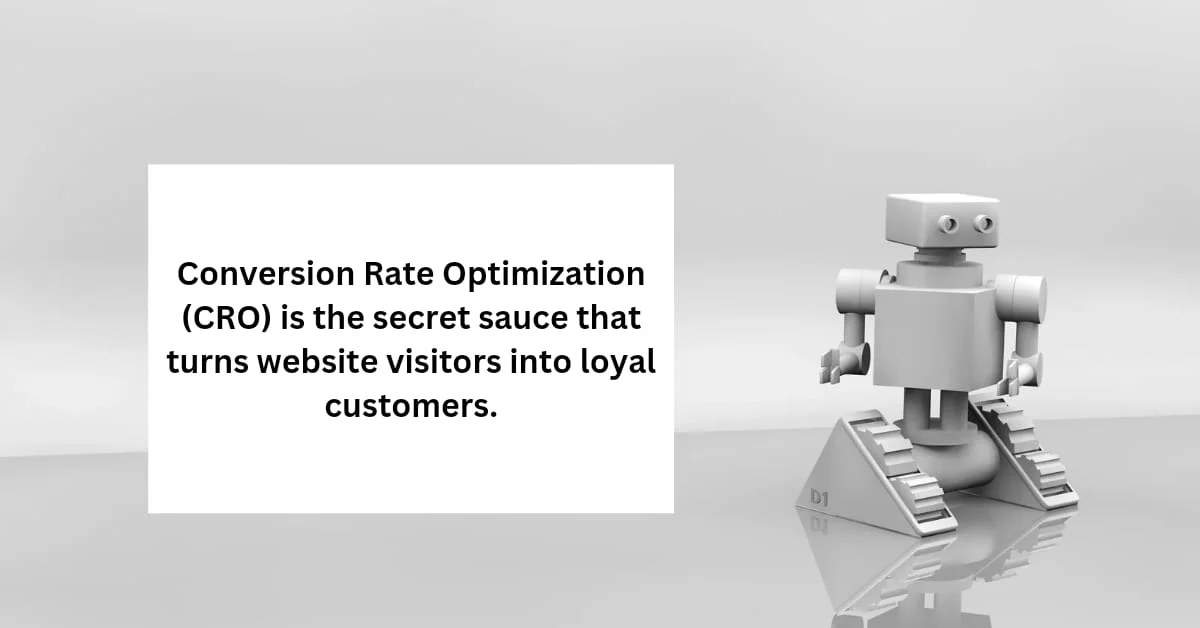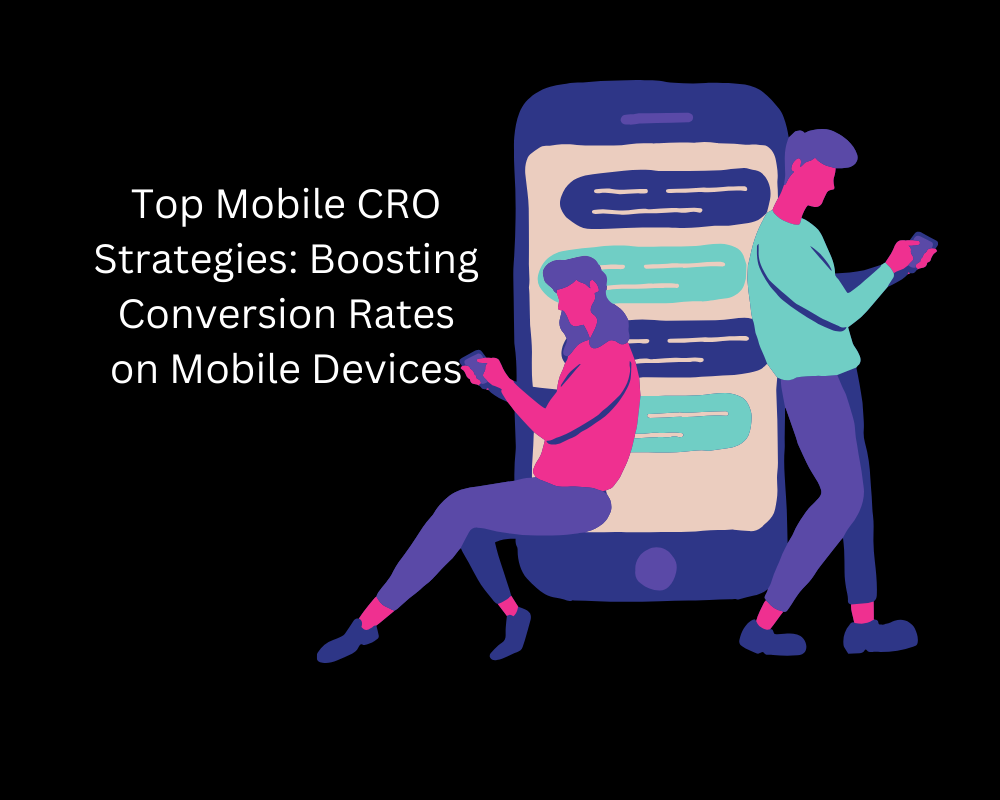Ever walked into a store where everything seems just right—where the products are exactly what you need, the staff know your preferences, and even the ambiance feels tailored to your taste? That’s the magic of personalization, and in the digital world, it’s a powerful tool for conversion rate optimization (CRO). When it comes to online experiences, personalization isn’t just a nice-to-have—it’s a must. It’s the secret sauce that transforms casual browsers into loyal customers.
But what exactly is personalization in CRO, and why should you care? In a nutshell, personalization is about creating customized experiences for your users based on their behavior, preferences, and interactions with your site. It’s like having a personal shopper who knows exactly what you want before you even ask. And when done right, personalization can be the difference between a missed opportunity and a conversion goldmine.
In this blog post, we’re going to explore how personalization can significantly boost your conversion rates. We’ll dive into practical, actionable techniques to tailor user experiences effectively, backed by real-world case studies that show the power of personalized CRO in action. Whether you’re a seasoned CRO specialist or just getting started, this guide will arm you with the tools and insights you need to start driving more conversions through the art of personalization.
What is Personalization in CRO?

Personalization in CRO (Conversion Rate Optimization) is like having a one-on-one conversation with each of your users. Instead of offering a generic experience to everyone who visits your site, personalization allows you to tailor the content, offers, and interactions based on individual user data. Imagine walking into a store where the salesperson knows your name, understands your style, and shows you only the items you’re likely to love. Online, personalization achieves this same effect, creating an environment where users feel understood and valued.
But how does this work in the digital realm? Personalization leverages data—everything from browsing history to demographic information and even real-time behavior. By analyzing this data, you can segment your audience into different groups and create targeted experiences for each one. For example, a new visitor might see a special welcome offer, while a returning customer is shown products related to their previous purchases.
Why is this so important? Because personalization directly influences user behavior. When users feel that a site “gets” them, they’re more likely to engage, spend time browsing, and ultimately, make a purchase. In fact, studies show that 91% of consumers are more likely to shop with brands that provide relevant offers and recommendations.
In the next section, we’ll explore the tangible benefits of personalization in CRO and how these tailored experiences can lead to a noticeable uptick in your conversion rates.
The Benefits of Personalization in Boosting Conversions
Personalization isn’t just a buzzword—it’s a proven strategy that can transform your conversion rates. When you customize the user experience, you’re not just catering to your audience’s needs; you’re also guiding them towards making a purchase. Let’s break down the key benefits of personalization in CRO:

1. Increased Engagement
First and foremost, personalization drives engagement. When users see content that resonates with their interests, they’re more likely to interact with it. Personalized recommendations, tailored messages, and relevant offers keep users on your site longer, reducing bounce rates and increasing the chances of conversion. It’s like having a conversation with someone who knows exactly what you’re interested in—naturally, you’re going to pay more attention.
2. Enhanced User Satisfaction
Personalization makes users feel valued. When a website anticipates their needs and provides relevant solutions, users perceive the experience as more enjoyable and efficient. This satisfaction isn’t just about making users happy in the moment; it also builds trust and loyalty over time. Happy users are not only more likely to convert—they’re also more likely to return, turning into repeat customers and even brand advocates.
3. Improved Conversion Rates
This is where the rubber meets the road. Personalized experiences have a direct and measurable impact on conversion rates. According to a study by Epsilon, personalized emails alone can increase conversion rates by 10%. And it’s not just emails—personalized landing pages, product recommendations, and even dynamic content based on user behavior can lead to significant lifts in conversions. When users feel that an offer is tailored specifically for them, they’re more likely to take action.
By focusing on these benefits, personalization in CRO can help you not only attract but also retain customers, driving growth for your business. But how do you go about implementing these strategies? That’s what we’ll explore in the next section, where we dive into effective techniques for incorporating personalization into your CRO efforts.
Effective Techniques for Implementing Personalization in CRO
Now that we’ve established how powerful personalization can be, let’s talk about how to actually implement it in your CRO strategy. There’s no one-size-fits-all approach here, but these techniques are proven to help tailor experiences that resonate with your audience and drive conversions.

1. Segmenting Your Audience
Think of audience segmentation as the foundation of any successful personalization effort. By dividing your audience into distinct groups based on demographics, behavior, or interests, you can deliver content that speaks directly to each group’s needs. For example, a first-time visitor might receive a welcome message with a discount offer, while a returning customer could be shown new products related to their past purchases.
Segmentation allows you to target users with precision, ensuring that the right message reaches the right person at the right time. This not only enhances the user experience but also increases the likelihood of conversion since the content is more relevant and engaging.
2. Using Behavioral Data
Behavioral data is a goldmine for personalization. By tracking how users interact with your site—what pages they visit, what products they view, how long they stay—you can gain deep insights into their preferences and intent. This data can then be used to personalize content in real-time.
For instance, if a user has been browsing a particular product category but hasn’t made a purchase, you can display a personalized offer or recommendation related to that category. Similarly, if a user frequently visits your blog, you can suggest related articles or even offer a content upgrade, like an eBook, that aligns with their interests.
3. Dynamic Content and Personalized Offers
Dynamic content is a powerful tool that allows you to change the content on a page based on who’s viewing it. This could be as simple as addressing the user by name or as complex as showing different product recommendations based on past purchases. Personalized offers, such as discounts or special deals, can also be tailored to different segments of your audience.
For example, an eCommerce site might use dynamic content to show different homepages to different users—new visitors might see a welcome video, while returning customers see products they’ve viewed before. This kind of personalized experience makes users feel recognized and valued, increasing the chances they’ll convert.
4. A/B Testing for Personalized Strategies
Even with the best data and intentions, not every personalization strategy will work perfectly right out of the gate. That’s where A/B testing comes in. By testing different versions of personalized content—whether it’s an email, landing page, or call-to-action—you can determine which version performs better.
A/B testing is crucial for optimizing your personalization efforts because it provides concrete data on what resonates with your audience. For instance, you might test whether personalized product recommendations based on browsing history perform better than recommendations based on purchase history. The insights gained from these tests can help you refine your approach and continuously improve your conversion rates.
These techniques provide a roadmap for incorporating personalization into your CRO strategy effectively. In the next section, we’ll look at some real-world case studies that showcase how these strategies have been used to drive significant conversions.
Case Studies: Success Stories of Personalization Driving Conversions
Seeing personalization in action can offer powerful insights into its potential. Let’s explore some real-world examples where businesses leveraged personalized CRO strategies to achieve impressive conversion results.

1. eCommerce Giant Boosts Sales with Personalized Product Recommendations
One of the world’s leading eCommerce platforms implemented a sophisticated personalization strategy that centered on product recommendations. By analyzing users’ browsing history, previous purchases, and even items left in the cart, the company was able to suggest relevant products on the homepage, product pages, and during the checkout process.
The result? A 20% increase in sales from recommended products alone. Not only did this strategy drive immediate conversions, but it also encouraged repeat purchases by keeping customers engaged with products they were genuinely interested in. This case highlights the power of using personalized recommendations to nudge users towards a purchase.
2. SaaS Company Increases Onboarding Success with Personalized Experiences
A SaaS (Software as a Service) company faced challenges with user onboarding, a critical phase where users decide whether to continue using the software or not. To improve the onboarding experience, the company introduced a personalized approach. New users were segmented based on their industry, company size, and specific needs. This segmentation allowed the SaaS provider to tailor the onboarding process, offering personalized tutorials, feature recommendations, and support resources.
The result was a 15% increase in trial-to-paid conversions and a 25% reduction in churn rates during the first 30 days. By ensuring that users felt supported and that the software was aligned with their specific needs, the company significantly boosted its conversion rates and customer retention.
3. Travel Company Boosts Bookings by Personalizing User Journeys
A travel company wanted to improve its booking rates by offering more personalized experiences to its website visitors. By tracking user behavior, such as destination searches, preferred travel dates, and past bookings, the company was able to deliver customized travel packages, special offers, and relevant content.
For example, users who frequently searched for beach destinations were shown deals and content related to beach holidays on their next visit. Additionally, the company used email personalization to send targeted offers based on the user’s last search or booking.
This approach led to a 30% increase in online bookings and a significant rise in customer satisfaction scores. The personalized user journeys made customers feel like the company truly understood their travel preferences, making them more likely to book through the platform.
These case studies demonstrate how personalization, when strategically applied, can lead to significant boosts in conversion rates across different industries. But personalization isn’t just about success stories—it’s also about avoiding common pitfalls. In the next section, we’ll discuss some of the mistakes companies often make with personalization and how you can steer clear of them.
Common Mistakes in Personalization and How to Avoid Them
Personalization can be a game-changer for CRO, but it’s not without its challenges. If not handled carefully, attempts at personalization can backfire, leading to user discomfort or even distrust. Let’s look at some common mistakes businesses make with personalization and how you can avoid them.

1. Overpersonalization: When It Gets Creepy
While personalization aims to create a tailored experience, there’s a fine line between being helpful and being intrusive. Overpersonalization occurs when users feel like they’re being overly monitored or when the personalization feels too specific, making it seem as though their privacy is being invaded.
For example, imagine receiving an email with a subject line that references a product you casually browsed once, but didn’t even add to your cart. It might make you wonder how much the company knows about you, which can be unsettling.
How to Avoid It: Strike a balance by focusing on personalization that adds value without being too invasive. Use data to enhance the user experience, but avoid making it too obvious that you’re tracking their every move. Keep personalized content relevant and timely, and ensure that users have opted in for this level of interaction.
2. Ignoring Data Privacy: The Trust Factor
In an era where data breaches and privacy concerns are rampant, ignoring data privacy is a significant mistake. Users are increasingly aware of how their data is being used, and any slip-up can damage trust and lead to a loss of business.
For instance, personalizing an experience based on sensitive information that users didn’t explicitly share can make them feel uneasy. This could include details like their location, financial status, or health-related information.
How to Avoid It: Always prioritize transparency. Clearly communicate to users how their data will be used, and ensure you’re compliant with privacy regulations like GDPR or CCPA. Offer users control over their data with options to customize their privacy settings and provide easy ways for them to opt-out if they choose.
3. Failing to Test and Optimize: The Set-It-and-Forget-It Trap
Personalization isn’t a one-time task—it requires continuous testing and optimization to be truly effective. Some companies fall into the trap of setting up personalization features and then leaving them unchecked, assuming they’ll always work as intended.
But user preferences and behaviors can change over time, and what worked yesterday might not work today. Without regular testing, you risk delivering outdated or ineffective personalized content, which can lead to missed conversion opportunities.
How to Avoid It: Implement a robust A/B testing strategy to continuously evaluate the effectiveness of your personalized content. Regularly review performance data, gather user feedback, and be ready to tweak or pivot your approach as needed. This proactive approach ensures that your personalization strategies remain relevant and effective.
By avoiding these common pitfalls, you can create personalized experiences that truly resonate with your audience, enhancing their journey and driving better conversion rates. In the next section, we’ll look at the tools and technologies that can help you execute your personalization strategies effectively.
Tools and Technologies for Effective CRO Personalization
Executing a successful personalization strategy requires the right set of tools and technologies. These tools not only help you gather and analyze data but also enable you to implement and optimize personalized experiences at scale. Let’s explore some of the top tools that can elevate your CRO personalization efforts.

1. Optimizely: A/B Testing and Personalization Powerhouse
Optimizely is a leading platform for experimentation and personalization. It allows you to run A/B tests, multivariate tests, and personalized campaigns across your website, mobile apps, and more. With its robust targeting features, you can segment your audience based on demographics, behavior, or even third-party data, and deliver tailored content that resonates.
Why Optimizely?
Optimizely’s easy-to-use interface, combined with powerful analytics, makes it ideal for teams looking to scale their personalization efforts. The platform also integrates seamlessly with various data sources, enabling you to create dynamic, data-driven experiences that drive conversions.
2. HubSpot: All-in-One Marketing Automation
HubSpot is a comprehensive marketing automation platform that offers personalization features across its suite of tools. From personalized email campaigns to dynamic website content, HubSpot allows you to create tailored experiences based on user behavior, lifecycle stage, and more.
Why HubSpot?
HubSpot’s strength lies in its ability to centralize all your marketing efforts, making it easier to manage and optimize personalized campaigns. Its built-in CRM ensures that you have a 360-degree view of your customers, enabling more accurate and effective personalization.
3. Dynamic Yield: Personalization at Scale
Dynamic Yield is a personalization platform that focuses on delivering individualized experiences at scale. It offers a range of features, including personalized product recommendations, behavioral messaging, and adaptive design elements. The platform uses machine learning to continuously optimize and refine personalized experiences based on real-time data.
Why Dynamic Yield
Dynamic Yield is particularly powerful for eCommerce sites looking to personalize every aspect of the customer journey. Its machine learning capabilities ensure that your personalization strategies evolve with your users, providing relevant and engaging experiences that boost conversions.
4. Segment: Data Integration and Customer Data Platform (CDP)
Segment is a customer data platform that helps you collect, clean, and route your customer data to various tools and systems. By unifying your data, Segment ensures that you have a single source of truth for your personalization efforts, allowing for more accurate targeting and segmentation.
Why Segment?
If data silos are a challenge for your business, Segment can be a game-changer. It consolidates data from different touchpoints, ensuring that your personalization strategies are informed by comprehensive, up-to-date information. This holistic view of your customers allows for more precise and impactful personalization.
5. Monetate: Real-Time Personalization
Monetate offers real-time personalization solutions that allow you to deliver relevant content and experiences as users interact with your site. Whether it’s showing dynamic content, customizing navigation, or personalizing calls-to-action, Monetate’s platform helps you adapt your site in real-time to meet user expectations.
Why Monetate?
Monetate is particularly effective for businesses that need to respond quickly to user behavior. Its real-time capabilities ensure that your site remains relevant and engaging, helping to capture conversions in the moment.
These tools offer a variety of features that can help you execute your personalization strategies with precision and scale. By choosing the right tools for your business, you can create personalized experiences that not only engage your audience but also drive significant improvements in conversion rates.
In the next section, we’ll discuss the future of personalization in CRO, including emerging trends and predictions for how personalization will continue to evolve.
The Future of Personalization in CRO
As technology continues to advance, the landscape of personalization in CRO is set to evolve in exciting ways. Staying ahead of these trends will help you leverage personalization to its fullest potential. Let’s explore some emerging trends and predictions for the future of personalization in CRO.
1. AI-Driven Personalization
Artificial Intelligence (AI) is poised to revolutionize personalization by making it more precise and scalable. AI algorithms can analyze vast amounts of data to identify patterns and predict user behavior, enabling real-time personalization on an individual level. This means that websites and apps can automatically adjust their content, layout, and recommendations to suit each visitor’s unique preferences and needs.
What This Means for You: Incorporating AI into your personalization strategies can lead to more accurate targeting and higher conversion rates. As AI technology becomes more accessible, even smaller businesses will be able to harness its power for personalized marketing.
2. Voice Search and Personalization
With the rise of voice-activated devices and search engines, personalization is extending beyond visual and text-based interactions. Voice search offers new opportunities to create personalized experiences, such as tailoring responses based on previous interactions or customizing recommendations based on the user’s voice profile.
What This Means for You: Adapting your personalization strategies to include voice search can help you reach a broader audience and offer a more seamless user experience. Consider how your business can integrate voice search personalization to stay ahead of the curve.
3. Augmented Reality (AR) and Virtual Reality (VR) Experiences
AR and VR technologies are opening new dimensions for personalization, especially in retail and eCommerce. These immersive technologies allow users to visualize products in their own environment or experience virtual store tours that are tailored to their preferences.
What This Means for You:
Exploring AR and VR as part of your personalization strategy can provide a competitive edge, especially for businesses in fashion, home decor, and travel. These technologies offer a unique way to engage users and drive conversions by enhancing the shopping experience.
4. Increased Focus on Privacy and Data Ethics
As personalization becomes more advanced, concerns around data privacy and ethics are also increasing. Users are becoming more aware of how their data is used, and regulations like GDPR and CCPA are enforcing stricter data protection measures.
What This Means for You: Balancing personalization with privacy will be crucial. Ensure that your personalization strategies are transparent, respectful of user data, and compliant with relevant laws. Building trust with your users by prioritizing their privacy will be essential for long-term success.
5. Hyper-Personalization
Hyper-personalization takes personalization to the next level by using real-time data and AI to deliver highly customized experiences. This approach considers not just demographic and behavioral data, but also contextual factors such as weather, location, and current events to tailor experiences in the moment.
What This Means for You: Embracing hyper-personalization can lead to more engaging and effective user experiences. By considering the broader context of each user interaction, you can deliver content and offers that are not only relevant but also timely and impactful.
As these trends continue to shape the future of personalization in CRO, staying informed and adaptable will be key. By leveraging these emerging technologies and strategies, you can create more meaningful and effective personalized experiences that boost conversions and foster customer loyalty.
In the final section, we’ll wrap up with a summary of key points and a call to action, encouraging readers to implement these personalization strategies in their CRO efforts.
Long story short

Personalization in Conversion Rate Optimization (CRO) is no longer a futuristic concept—it’s a present-day necessity that can dramatically transform how users interact with your website and, ultimately, how they convert. Throughout this guide, we’ve delved into the essence of personalization, explored its myriad benefits, examined effective implementation techniques, learned from real-world success stories, navigated common pitfalls, and peeked into the future of personalization in CRO.
Key Takeaways:
- Understanding Personalization: Personalization tailors user experiences based on individual behaviors, preferences, and interactions, making each visitor feel uniquely valued.
- Benefits: Implementing personalization leads to increased engagement, enhanced user satisfaction, and significantly improved conversion rates.
- Techniques: Successful personalization hinges on audience segmentation, leveraging behavioral data, deploying dynamic content and personalized offers, and continuously testing and optimizing strategies.
- Real-World Success: Case studies from eCommerce, SaaS, and travel industries illustrate the tangible impact of well-executed personalization strategies on conversion rates.
- Avoiding Mistakes: It’s crucial to avoid overpersonalization, respect data privacy, and maintain an ongoing optimization process to ensure personalization efforts remain effective and trusted.
- Future Trends: Emerging technologies like AI-driven personalization, voice search integration, AR/VR experiences, and hyper-personalization are set to further revolutionize CRO, while an increased focus on data ethics will shape how personalization is implemented.
Embracing personalization in your CRO strategy isn’t just about keeping up with trends—it’s about creating meaningful, engaging experiences that resonate with your audience on a personal level. By doing so, you not only enhance user satisfaction but also drive substantial growth for your business.












